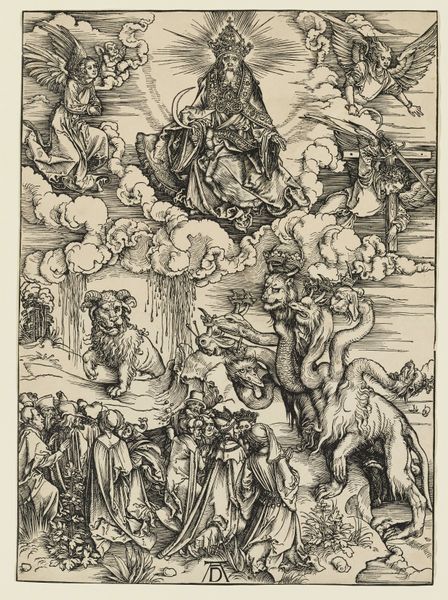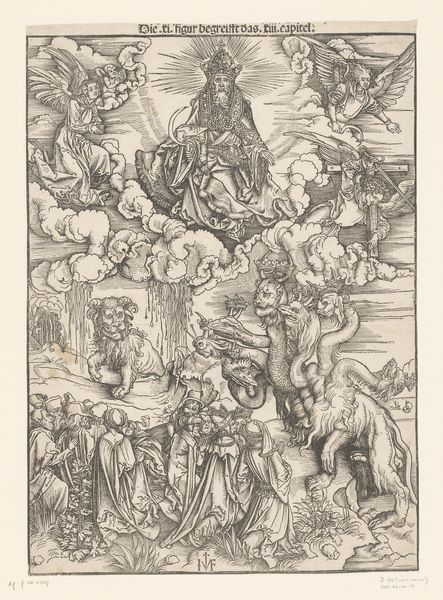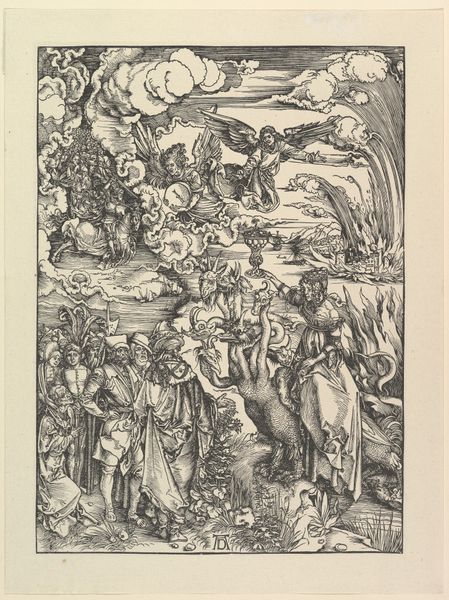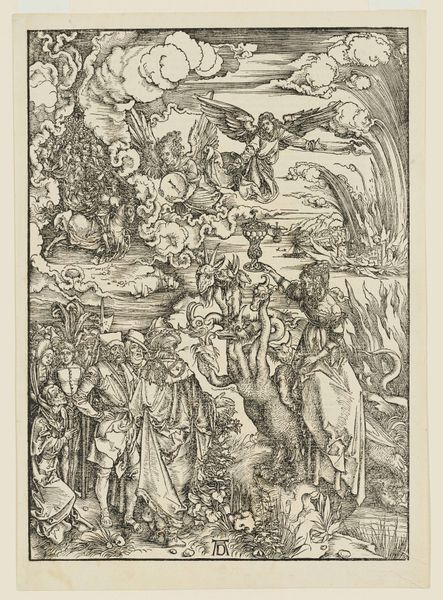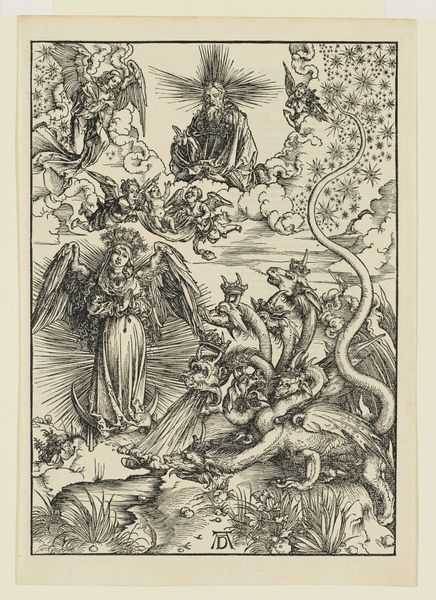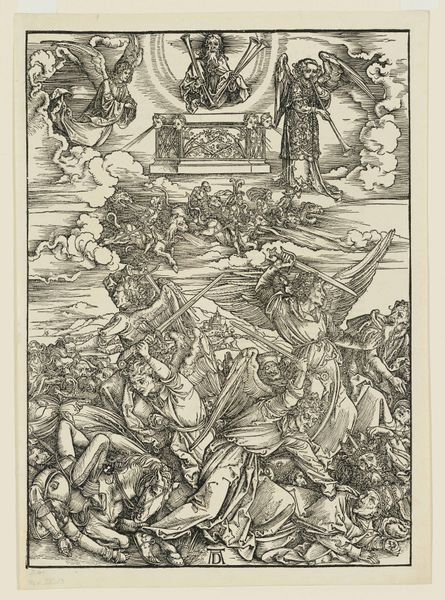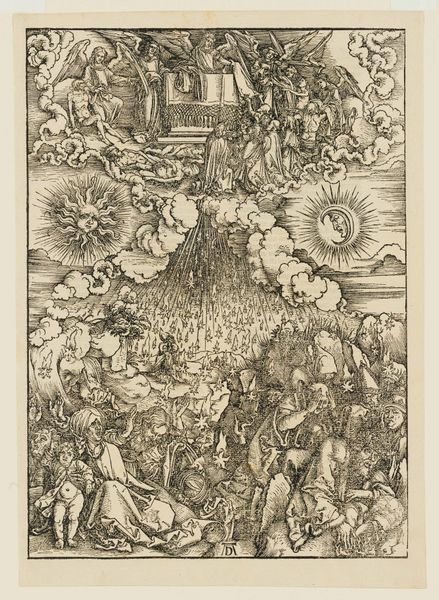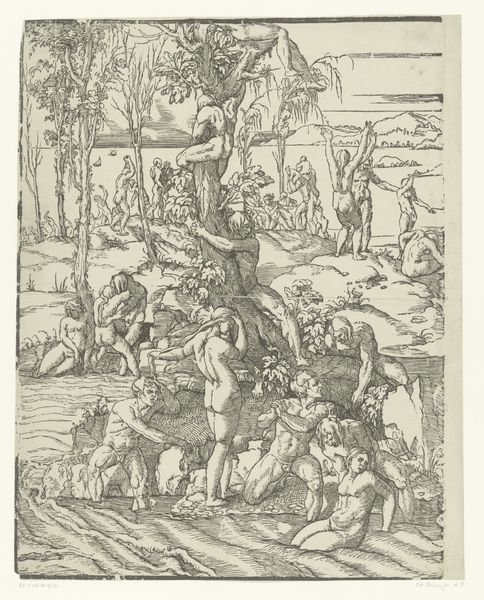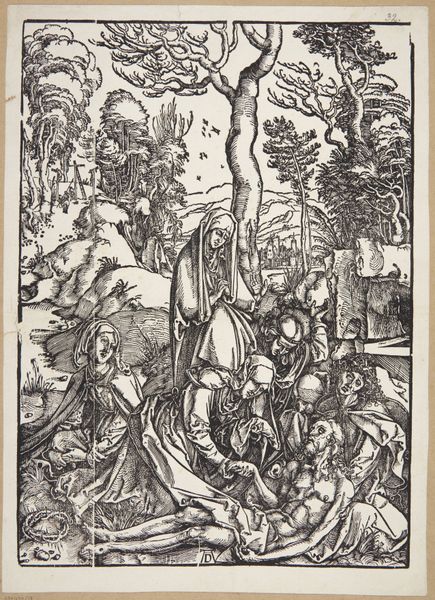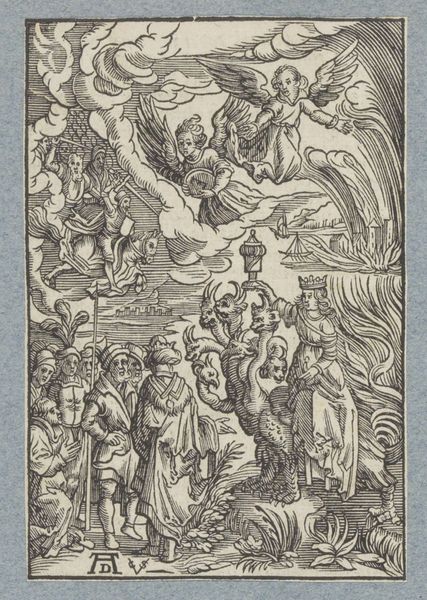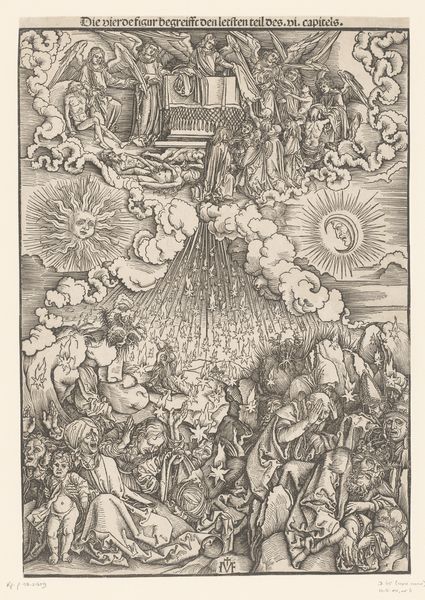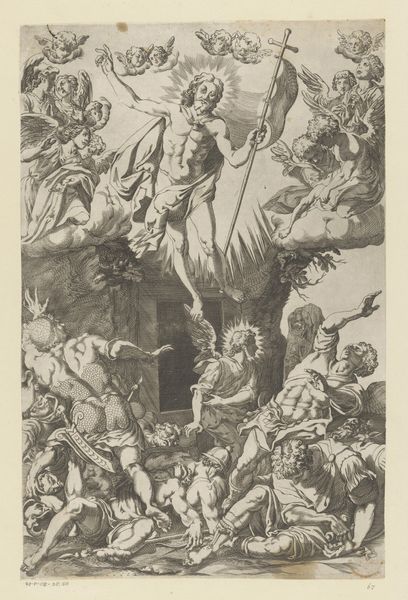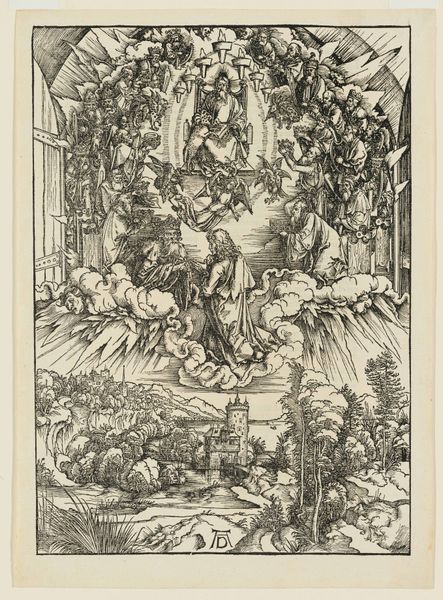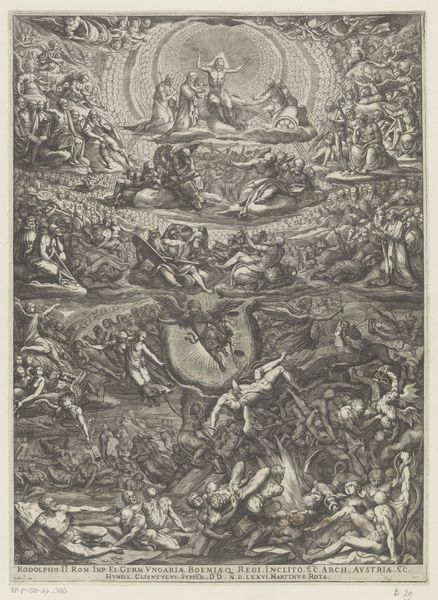
The Worship of Seven-Headed Dragon and the Horned Lion Possibly 1498 - 1511
0:00
0:00
print, woodcut
#
narrative-art
# print
#
figuration
#
woodcut
#
line
#
history-painting
#
northern-renaissance
Dimensions: 15 1/2 x 11 1/8 in. (39.37 x 28.26 cm) (image)
Copyright: Public Domain
Curator: Looking at this print, “The Worship of Seven-Headed Dragon and the Horned Lion” created by Albrecht Dürer between 1498 and 1511, now residing at the Minneapolis Institute of Art, one cannot help but feel overwhelmed by the density of the imagery. What strikes you immediately? Editor: It feels incredibly ominous. The contrast is so stark; that dense, black line work really conveys a sense of dread, almost like peering into some kind of apocalyptic vision. There is a crowd facing a fantastic bestiary: several dragons sharing one body and a bizarre horned lion! The crowd’s faces have this weird sort of placidity… Are they surrendering themselves willingly? Curator: Indeed! The print serves as an allegory. Dürer draws on symbolism taken directly from the Book of Revelation. That horned lion, that is the Antichrist. Those submitting to it have clearly lost their way. We can also observe God enthroned above this spectacle in a state of sublime serenity— completely detached. His light even seems dimmed by the sheer presence of the dragon below. Editor: And notice the angels hovering above…one draws a sword! What a complex array of symbols, like a coded message about power, corruption and perhaps eventual salvation. How did Dürer use his materials to intensify this symbolism? Curator: Dürer created this scene through woodcut, a relief printing technique where the artist carves away from the surface of a block of wood, leaving the design to be inked and printed. This medium, with its bold lines and stark contrasts, perfectly communicates the apocalyptic themes, in sharp, visually arresting terms. It was well-suited to mass production. Such themes are perfect for wide dissemination within society, don’t you think? Editor: Absolutely. Think about the anxieties prevalent during the Renaissance. Religious and political upheaval would lead an audience to see it as something other than mere Biblical illustration. This piece speaks directly to the political and social landscape in which it was produced, perhaps cautioning viewers against false idols, papal corruption, and heretical belief! Curator: That makes me realize how incredibly relevant such a piece still is, with symbols of power and hidden threats ever-present within society and personal psychology. Editor: I agree. Looking back at this scene, it almost seems timeless. It leaves me thinking about our contemporary obsession with apocalyptic imagery and how symbols constantly get reinterpreted.
Comments
No comments
Be the first to comment and join the conversation on the ultimate creative platform.
